Themed collection PFAS

Themed issues on per- and polyfluoroalkyl substances
Guest editors Lutz Ahrens, Jonathan Benskin, Ian Cousins, Michelle Crimi and Christopher Higgins introduce the “Per- and polyfluoroalkyl substances (PFASs)” themed issue.

Environ. Sci.: Processes Impacts, 2019,21, 1797-1802
https://doi.org/10.1039/C9EM90047K
Spatial and temporal variability of perfluoroalkyl substances in the Laurentian Great Lakes
Concentrations and distributions of perfluoroalkyl substances vary widely in water, sediments, and biota in the Laurentian Great Lakes.
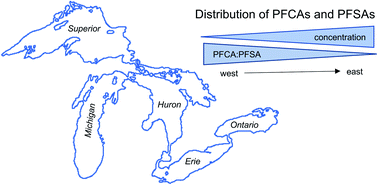
Environ. Sci.: Processes Impacts, 2019,21, 1816-1834
https://doi.org/10.1039/C9EM00265K
The concept of essential use for determining when uses of PFASs can be phased out
The concept of essential use is developed and applied to various uses of PFASs to determine the feasibility of elimination or substitution in each use category.
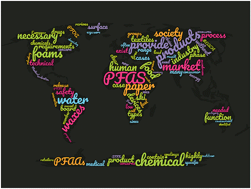
Environ. Sci.: Processes Impacts, 2019,21, 1803-1815
https://doi.org/10.1039/C9EM00163H
Treatment of per- and polyfluoroalkyl substances in landfill leachate: status, chemistry and prospects
This work critically reviews the occurrence, chemistry, treatment technologies and knowledge gaps for per- and polyfluoroalkyl substances in landfill leachate.
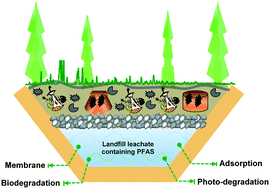
Environ. Sci.: Water Res. Technol., 2019,5, 1814-1835
https://doi.org/10.1039/C9EW00645A
Efficient removal of per- and polyfluoroalkyl substances (PFASs) in drinking water treatment: nanofiltration combined with active carbon or anion exchange
Nanofiltration produces potable water, while adsorption materials GAC and AIX remove more PFASs from membrane retentate than from raw water.
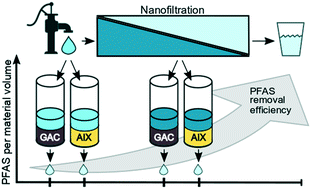
Environ. Sci.: Water Res. Technol., 2019,5, 1836-1843
https://doi.org/10.1039/C9EW00286C
A global atmospheric chemistry model for the fate and transport of PFCAs and their precursors
Global model for the atmospheric chemistry of PFCA precursors.
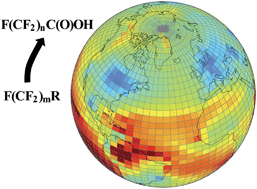
Environ. Sci.: Processes Impacts, 2020,22, 285-293
https://doi.org/10.1039/C9EM00326F
Electrochemical degradation of perfluoroalkyl acids by titanium suboxide anodes
Effective degradation of eight perfluoroalkyl acids by electrooxidation on titanium suboxide anodes is correlated to their respective molecular structures, offering insight into their degradation behaviors.
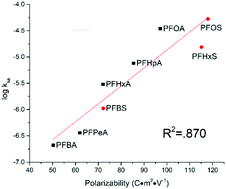
Environ. Sci.: Water Res. Technol., 2020,6, 144-152
https://doi.org/10.1039/C9EW00759H
The determination of two emerging perfluoroalkyl substances and related halogenated sulfonic acids and their significance for the drinking water supply chain
Analytical methodologies were developed for two emerging PFAS, F3-MSA and HFPO-DA, in order to assess their occurrence and levels in Dutch and Belgian waters and evaluate human health risks due to their presence in drinking water.
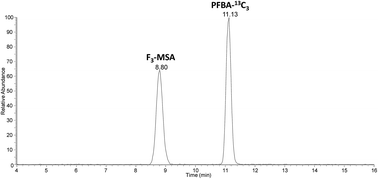
Environ. Sci.: Processes Impacts, 2019,21, 1899-1907
https://doi.org/10.1039/C9EM00393B
Point source characterization of per- and polyfluoroalkyl substances (PFASs) and extractable organofluorine (EOF) in freshwater and aquatic invertebrates
Major point sources of per- and polyfluoroalkyl substances (PFASs) cause ubiquitous spread of PFASs in the environment.

Environ. Sci.: Processes Impacts, 2019,21, 1887-1898
https://doi.org/10.1039/C9EM00281B
Exploring open cheminformatics approaches for categorizing per- and polyfluoroalkyl substances (PFASs)
Combining expert knowledge, SMARTS-based cheminformatics and the ontology-based ClassyFire, the categorization of PFASs with open cheminformatics approaches is explored with a set of 770 PFASs.
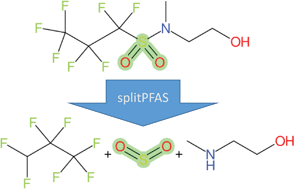
Environ. Sci.: Processes Impacts, 2019,21, 1835-1851
https://doi.org/10.1039/C9EM00321E
Metabolomic profiles associated with exposure to per- and polyfluoroalkyl substances (PFASs) in aquatic environments
Substantial differences in PFAA profiles were associated with significant differences in fatty acid and amino acid profiles.
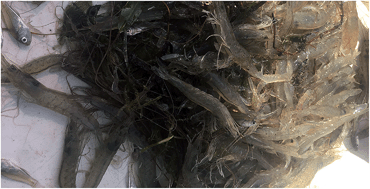
Environ. Sci.: Processes Impacts, 2019,21, 1980-1990
https://doi.org/10.1039/C9EM00394K
Biomagnification of perfluoroalkyl acids (PFAAs) in the food web of an urban river: assessment of the trophic transfer of targeted and unknown precursors and implications
In the Orge River, the contribution of PFAA precursors decreases between the base and the top of the trophic web.
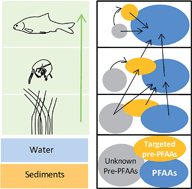
Environ. Sci.: Processes Impacts, 2019,21, 1864-1874
https://doi.org/10.1039/C9EM00322C
Aqueous film forming foam and associated perfluoroalkyl substances inhibit methane production and Co-contaminant degradation in an anaerobic microbial community
This work determines the components of aqueous film forming foam responsible for disrupting microbial community functions.
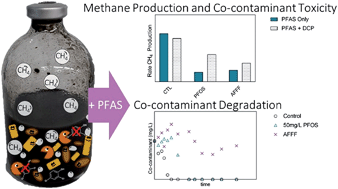
Environ. Sci.: Processes Impacts, 2019,21, 1915-1925
https://doi.org/10.1039/C9EM00241C
Children's exposure to perfluoroalkyl acids – a modelling approach
The present work assesses the exposure of a child cohort to PFOA, PFOS and PFHxS from 1 year to 10.5 years of age.
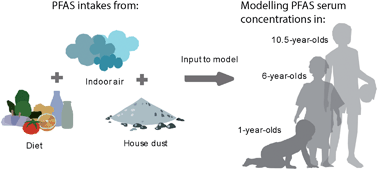
Environ. Sci.: Processes Impacts, 2019,21, 1875-1886
https://doi.org/10.1039/C9EM00323A
Partition coefficients of four perfluoroalkyl acid alternatives between bovine serum albumin (BSA) and water in comparison to ten classical perfluoroalkyl acids
Alternatives to long-chain PFAAs sorb similarly strongly to serum albumin as the classical PFAAs.

Environ. Sci.: Processes Impacts, 2019,21, 1852-1863
https://doi.org/10.1039/C9EM00290A
Leachate emissions of short- and long-chain per- and polyfluoralkyl substances (PFASs) from various Norwegian landfills
Restrictions on the use of long-chain per- and polyfluoralkyl substances (PFASs) has led to substitutions with short-chain PFASs.
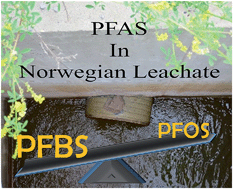
Environ. Sci.: Processes Impacts, 2019,21, 1970-1979
https://doi.org/10.1039/C9EM00170K
Vertical transport and sinks of perfluoroalkyl substances in the global open ocean
PFAS concentrations in the deep chlorophyll maximum depth in the tropical oceans and simultaneous estimates of vertical fluxes by eddy diffusivity are reported. Potential biotic/abiotic processes affecting PFAS fate in the ocean are discussed.
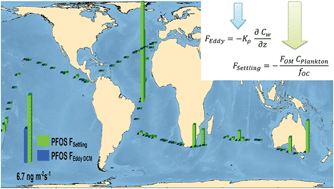
Environ. Sci.: Processes Impacts, 2019,21, 1957-1969
https://doi.org/10.1039/C9EM00266A
Investigation of binding and activity of perfluoroalkyl substances to the human peroxisome proliferator-activated receptor β/δ
In addition to PPARα and PPARγ, PPARβ/δ mediated pathway might also be a potential adverse outcome pathway for PFASs.

Environ. Sci.: Processes Impacts, 2019,21, 1908-1914
https://doi.org/10.1039/C9EM00218A
Factors affecting spatial and temporal patterns in perfluoroalkyl acid (PFAA) concentrations in migratory aquatic species: a case study of an exploited crustacean
Free-ranging prawns showed substantial spatial and temporal variation in PFOS concentrations, most likely driven by behavioural and physiological factors.
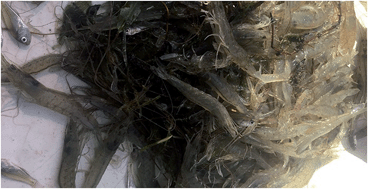
Environ. Sci.: Processes Impacts, 2019,21, 1946-1956
https://doi.org/10.1039/C9EM00202B
Previously unidentified sources of perfluoroalkyl and polyfluoroalkyl substances from building materials and industrial fabrics
Investigation of building materials and industrial textiles and identification of hitherto unknown sources of PFASs.
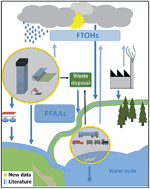
Environ. Sci.: Processes Impacts, 2019,21, 1936-1945
https://doi.org/10.1039/C9EM00091G
Closing the gap – inclusion of ultrashort-chain perfluoroalkyl carboxylic acids in the total oxidizable precursor (TOP) assay protocol
A novel selective solid–liquid extraction of PFASs from oxidized batches of the total oxidizable precursor (TOP) assay enables a complete mass balance by inclusion of ultrashort-chain PFASs.
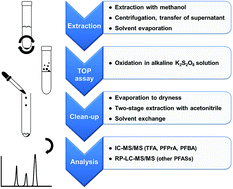
Environ. Sci.: Processes Impacts, 2019,21, 1926-1935
https://doi.org/10.1039/C9EM00169G
Removal of per- and polyfluoroalkyl substances (PFASs) from tap water using heterogeneously catalyzed ozonation
Heterogeneously catalyzed ozonation is successful in removing per- and polyfluoroalkyl substances from water, while persulfate can aid the treatment process.
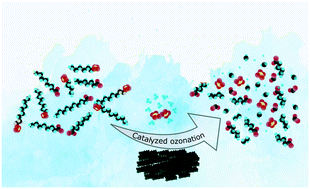
Environ. Sci.: Water Res. Technol., 2019,5, 1887-1896
https://doi.org/10.1039/C9EW00339H
Comparative study of PFAS treatment by UV, UV/ozone, and fractionations with air and ozonated air
Conducted using multifunctional equipment, this comparative study showed 95% PFAS removal achieved by ozonated air fractionation.
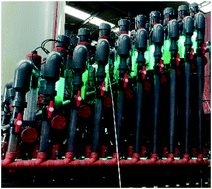
Environ. Sci.: Water Res. Technol., 2019,5, 1897-1907
https://doi.org/10.1039/C9EW00701F
Towards the development of a standardized method for extraction and analysis of PFAS in biological tissues
Identification and minimization of factors associated with poor per- and polyfluoroalkyl substance (PFAS) analytical reproducibility enabled the development of a robust methodology for the extraction and analysis of PFAS in biological tissues.
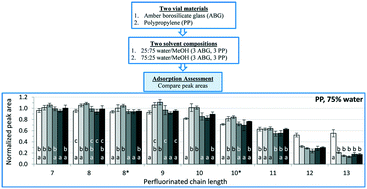
Environ. Sci.: Water Res. Technol., 2019,5, 1876-1886
https://doi.org/10.1039/C9EW00765B
Enhanced adsorption of perfluoro alkyl substances for in situ remediation
Numerous groundwater sites around the globe have been contaminated by aqueous film forming foam (AFFF) as a result of firefighting, fire training activities and the storage and accidental spillage of AFFF.
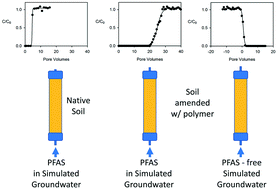
Environ. Sci.: Water Res. Technol., 2019,5, 1867-1875
https://doi.org/10.1039/C9EW00426B
Absorption of short-chain to long-chain perfluoroalkyl substances using swellable organically modified silica
Adsorbents comprising swellable organically modified silica were characterized to optimize the adsorption of a wide range of perfluoroalkyl substances from water.
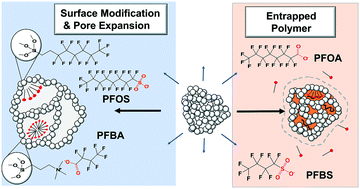
Environ. Sci.: Water Res. Technol., 2019,5, 1854-1866
https://doi.org/10.1039/C9EW00364A
Removal of per- and polyfluoroalkyl substances (PFASs) from contaminated groundwater using granular activated carbon: a pilot-scale study with breakthrough modeling
Pilot-scale treatment of PFAS contaminated groundwater with GAC; chain length dependent breakthrough; better PFAS adsorption correlated with more GAC transport pores; breakthrough modeling.
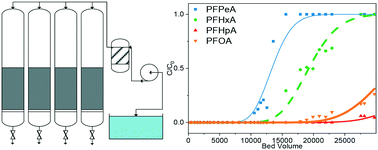
Environ. Sci.: Water Res. Technol., 2019,5, 1844-1853
https://doi.org/10.1039/C9EW00349E
About this collection
The challenges raised by per- and polyfluoroalkyl substances (PFASs) in the environment are unlike those historically faced by environmental scientists and engineers. Their persistence, their mobility, their surface-active behavior, and their common presence in complex mixtures of varying chemical properties make it challenging to detect and analyze PFASs, to model and predict their behavior in the environment, and to treat them in contaminated water systems.
This collection, Guest Edited by Lutz Ahrens (Swedish University of Agricultural Sciences), Jonathan Benskin (Stockholm University, Sweden), Ian Cousins (Stockholm University, Sweden), Michelle Crimi (Clarkson University, USA) and Chris Higgins (Colorado School of Mines, USA), showcases high-impact papers on the theme of PFAS, spanning publications in both ESPI and ESWRT.
Click here to return to the ESPI homepage
Click here to return to the ESWRT homepage